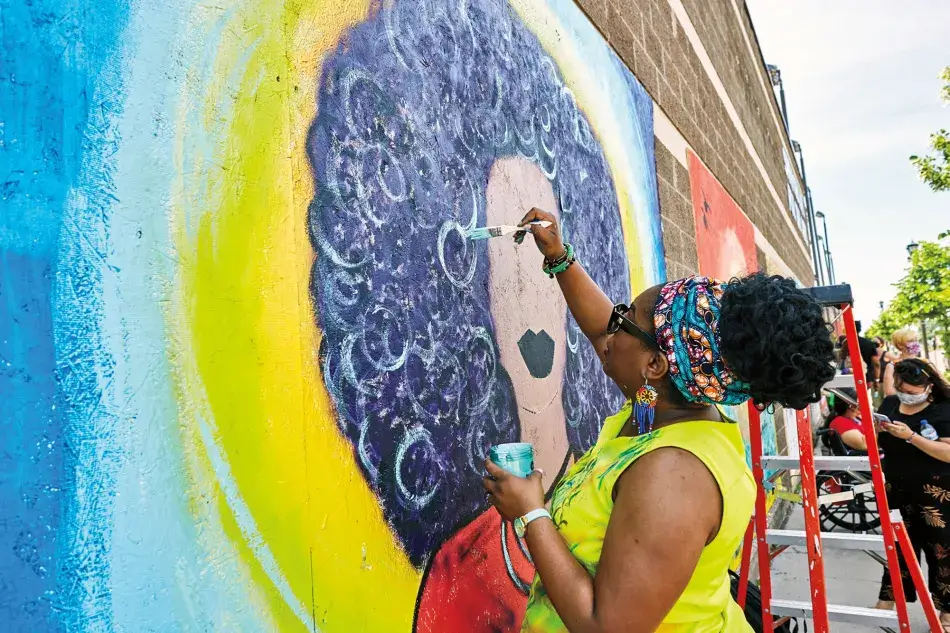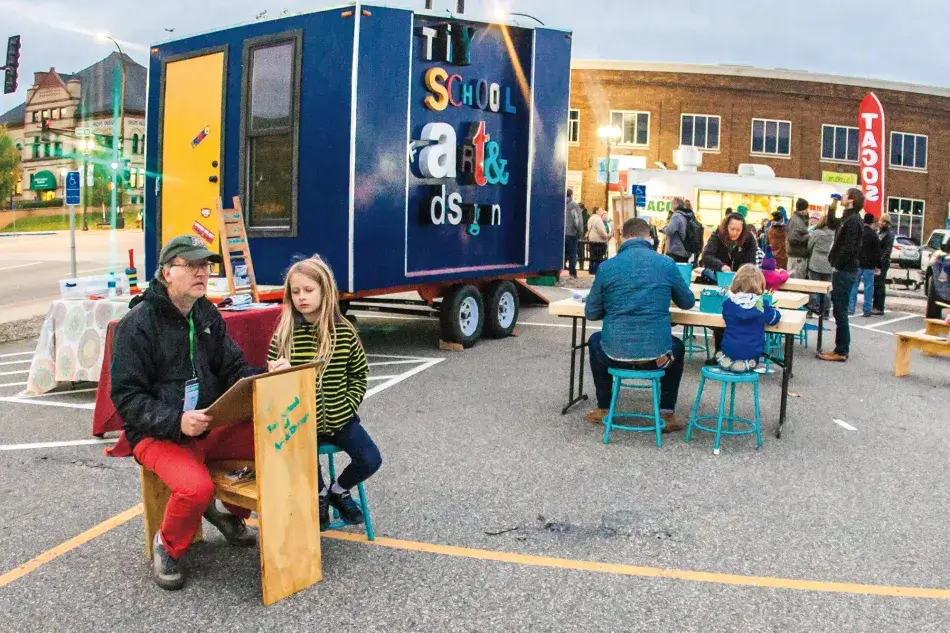
The past year has been one of crisis in the arts sector. As the nation grappled with the COVID-19 pandemic, venues closed, employment plummeted, and uncertainty affected every facet of the cultural field. Simultaneously, the renewed racial justice reckoning that swept the country last summer spurred an assessment of inequities in the arts. Leaders of arts organizations were confronted by difficult decisions and significant opportunities as they navigated these crises and attempted to support both the arts and artists.
To assess what artists and creatives need to thrive in this environment, the Academy sponsored a virtual event on May 20, 2021, with Springboard for the Arts. The program focused on Artists at Work and featured Academy member Thelma Golden, Director and Chief Curator of the Studio Museum in Harlem; Oskar Eustis, Artistic Director of The Public Theater and a member of the Academy’s Commission on the Arts; and Laura Zabel, Executive Director of Springboard for the Arts and a member of the Arts Commission.
In her introduction to the program, Zabel noted that the Academy’s Commission on the Arts sees elevating the value of the work of individual artists as a core component of its mission. Despite widespread appreciation of art, the public often fail to appreciate the individuals and organizations that bring art into their lives. Many artists, who are employed as contract workers or are small business owners, are undercompensated and lack access to affordable healthcare and worker protections. Zabel added that the Commission’s working group on Arts in Community and Economic Development is using the Works Progress Administration of the 1930s as an “invocation to boldness and scale . . . and a reminder to start specifically with individual artists in our conversation and center the lives of creative workers and artists in the work we were doing.”
This ethos was reflected in the participants’ remarks and in the missions of their organizations. Springboard for the Arts strives to connect creatives to the resources they need to serve their communities, while also promoting a vision of the future in which artists are considered essential. With offices in both urban St. Paul and rural Fergus Falls, Minnesota, Zabel describes the organization as “intensely place-based and neighborhood-focused, and also national in [its] aspiration.”
With a similarly close connection to its community, the Studio Museum was founded in 1969 by a group of artists, activists, philanthropists, and Harlem residents to “preserve, present, collect, and interpret the work of artists of African descent, locally, nationally, and internationally.” As Thelma Golden noted, the museum is dedicated to providing artists with the space they need to “not only survive but thrive.” During her presentation, Golden showed an image of The Architect (1959), a painting by Jacob Lawrence, one of the founders of the museum, and photographs of Harlem during the Harlem Renaissance to illustrate the dynamism and diversity of the creative workforce and point to artists’ vital role in building futures. To support that vision, the Studio Museum houses a residency program that serves three Black artists each year. As Golden stated, at the Studio Museum, “‘studio’ comes first – the museum is responsible not only for objects/artworks, but for care of artists.”

At The Public Theater, connecting the public with artists’ work is central to the organization’s mission, as indicated by the theater’s very name. The Public, which runs the popular Free Shakespeare in the Park in Central Park (among many other things), was founded in the 1950s to bring theater to the public. It continues its mission of being “by, of, and for the public” through The Mobile Unit, support of new plays, and the Public Works program that engages community groups and professional actors in the creation of participatory theater. As Oskar Eustis stated, “the job of The Public Theater was to take the voice of the people and put it on the stage . . . to make a new canon, a canon for our age, that gave voice to all the people who make up this fabulous, kaleidoscopic democracy.”
The past year has both reaffirmed the work happening at these institutions and called for a reorientation. Golden noted that this last year has charged the field with re-envisioning “what it is we need to create to imagine more justice and more equality.” This call has energized the field at a critical time when uncertainty makes clarity of purpose more essential than ever. The converging crises of 2020 offered a moment to, as Golden put it, “[rethink] the hierarchical relationship between artist, object, audience, and institution, and center artists.”
The present moment is not without precedent. Past periods of tumult have led to artistic movements that defined American culture. Speaking about how those past events and movements should inform our perspective now, Eustis shared:
We’re at a historical moment when things may be possible that were never possible before. We’ve had great periods of democratic expansion and enfranchisement that led to great theatrical renaissances: in the 1930s as a result of the Depression . . . the WPA and the Federal Theater Project came out of that. . . . In the 1960s the Civil Rights Movement, the Anti-War Movement, the Great Society Movement all produced this explosion of non-profit theaters across the United States in a beautiful decentralization of the American Theater. And now we’re at a moment when it’s possible that we could have another resurgence of democracy and culture. . . . It’s our job to make sure that, coming back from COVID, we’re helping to contribute to this being a moment when America becomes more equal, when the distribution of value across the culture is more equitable, when there is more justice, more inclusion, and more people get to claim that they are at the center of what America is.
As the arts sector looks for greater equity, building a better system to support individual artists and their work is imperative. The fragility of the paths available for artists to support their livelihood creates an often-insurmountable barrier for many who aspire to a career in the arts. As Zabel stated, “we have an emergency of inequity for artists and for communities that are impacted by multiple crises. Artists were among the first to lose their jobs and contracts as the bottom fell out at the beginning of the pandemic, and more than a year later, the unemployment statistics for artists are still really heartbreaking. For some disciplines, the unemployment rate remains over 50 percent, and over 90 percent of artists in this country report that they had income loss over the last year.” Artists need the protections that will allow them to earn a living wage, support their families, and, in turn, continue the work that makes life in communities and society meaningful.
The Commission on the Arts is developing a report on the creative workforce that will address these issues and recommend reforms at the national, state, and local levels. Conversations with arts leaders, including those who participated in the Artists at Work event, have been vital to the Commission’s understanding of the problems and, most important, the potential opportunities and solutions available to the field. The work of organizations like the Studio Museum in Harlem, The Public Theater, and Springboard for the Arts epitomizes the essential role art plays in individual and civic life and demonstrates the necessity of building a world in which artists and creative workers are valued and supported.
For more on the Commission on the Arts, visit the Academy’s website at www.amacad.org/project/commission-arts.